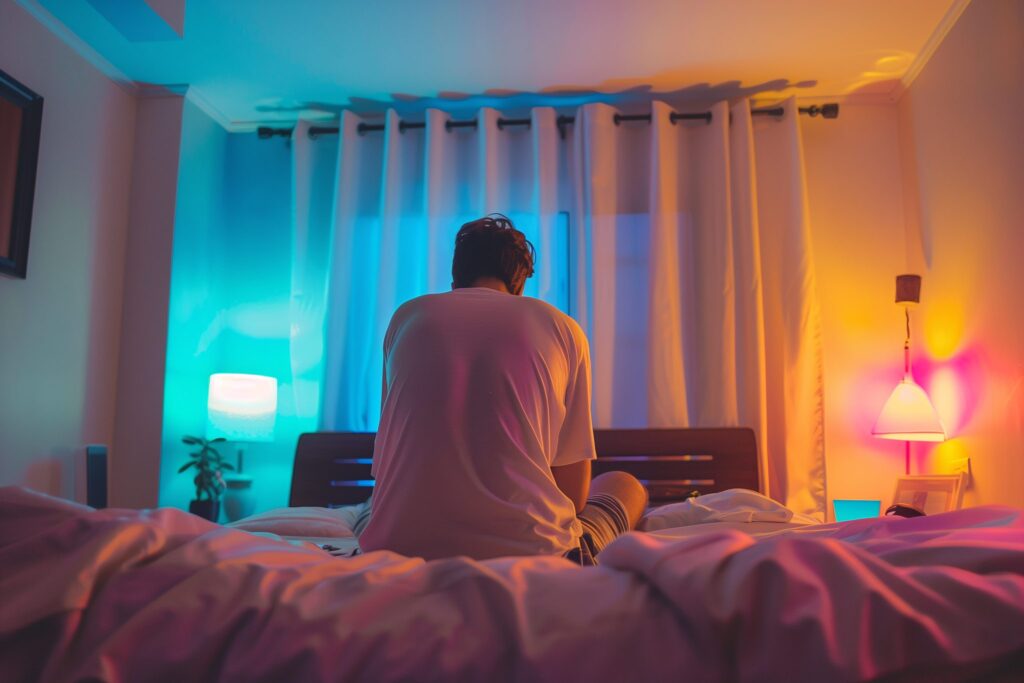
Progressive Muscle Relaxation and Sleep
Does progressive muscle relaxation help you reduce stress, calm your mind, and improve sleep quality? Let's find out what science has to say about it.

Getting a good night's sleep is crucial for overall health, but many of us struggle to wind down after a long, stressful day. One technique that's gained popularity for improving sleep quality is Progressive Muscle Relaxation (PMR). This simple yet effective method helps reduce physical tension and calm the mind, making it easier to fall asleep and stay asleep.
Let's discuss how this technique works and why it might be the solution you've been looking for.
What is Progressive Muscle Relaxation?
Progressive Muscle Relaxation (PMR) is a relaxation technique that involves tensing and then relaxing different muscle groups in the body. Dr. Edmund Jacobson developed the method in the 1920s as a way to help people reduce physical tension and stress. By consciously focusing on each muscle group, PMR encourages relaxation and helps break the cycle of tension and anxiety that often interferes with sleep.
The technique is simple to practice.
It begins with tensing a specific muscle group for about five seconds, then releasing the tension for 10-20 seconds. This process is repeated for each muscle group, from your feet up to your head or in reverse, depending on your preference. The goal is to increase awareness of how relaxation feels in your body and to distinguish it from the discomfort of tension.
When it comes to Progressive Muscle Relaxation and Sleep, the benefits are clear. PMR helps prepare the body for rest by signaling to the brain that it's time to wind down, lowering heart rate and easing muscle tension. It's especially helpful for people who find it difficult to relax after a stressful day.
The Science Behind PMR and Sleep
When it comes to Progressive Muscle Relaxation and Sleep, the science behind it is both fascinating and simple.
Our bodies carry stress and tension in our muscles, often without us even realizing it. This tension can disrupt the natural relaxation process needed for sleep. For many people, especially those dealing with stress, anxiety, or insomnia, muscle tightness can make falling asleep feel nearly impossible.
Research has shown that PMR can reduce the physiological signs of stress, including muscle tension, heart rate, and blood pressure. According to a study published in Frontiers in Psychology, PMR has been shown to effectively reduce symptoms of insomnia and anxiety, leading to better sleep quality. By relaxing the body and calming the mind, PMR activates the parasympathetic nervous system—the "rest and digest" system—which counters the body's stress response.
One significant benefit of PMR is that it shifts your body from a state of high arousal to a more relaxed state, preparing your muscles for rest. Thus, progressive muscle relaxation and sleep are strongly connected, with PMR acting as a powerful tool in reducing the effects of stress and improving sleep quality.
Benefits of PMR for Sleep Quality
The benefits of PMR are well-documented, with significant improvements in both sleep onset and quality. When you practice PMR regularly, the effects can be transformative, not just for falling asleep but for the overall quality of your rest.
Stress Reduction
PMR helps to reduce stress—one of the most common sleep disruptors. By relaxing the muscles and calming the nervous system, PMR signals to the brain that it's time to rest, making it easier to fall asleep.
Studies have shown that reducing physical tension correlates with falling asleep more quickly and experiencing deeper, uninterrupted sleep.
Correct Sleep Imbalances
PMR can be especially helpful for individuals dealing with sleep disorders. Those suffering from anxiety, depression, or chronic pain often experience disrupted sleep.
PMR addresses both physical and mental barriers to restful sleep, offering a natural, non-invasive solution. For example, PMR has been used as part of cognitive behavioral therapy for insomnia (CBT-I) to enhance sleep hygiene and reduce reliance on sleep medications.
How to Practice Progressive Muscle Relaxation for Better Sleep?
If you're looking to incorporate progressive muscle relaxation into your nightly routine, the process is easy to follow. Here's a simple step-by-step guide to get started:
Find a Quiet Space
Choose a calm, quiet environment where you can focus on your body without distractions.
Begin with Deep Breathing
Start with a few deep breaths to center yourself. Breathe in slowly through your nose, hold for a few seconds, then exhale gently.
Tense and Relax Muscle Groups
- Begin with your toes and work your way up to your head (or vice versa).
- Tense each muscle group for about five seconds, then relax it for 10-20 seconds.
- Pay attention to the contrast between tension and relaxation.
Start with your feet, then calves, thighs, abdomen, chest, hands, arms, shoulders, neck, and face.
Be mindful not to overexert while tensing; just a firm squeeze will do.
Focus on Relaxation
As you release the tension, focus on the feeling of relaxation that follows. Try to imagine your muscles becoming softer and heavier with each release.
Tips for Effectiveness
Perform PMR at least 15-20 minutes before bed to allow your body time to relax.
The more you practice, the more natural the process will become, and the faster your body will learn to relax. Additionally, pairing PMR with slow, deep breaths can deepen the relaxation process.
The Bottom Line
Incorporating progressive muscle relaxation into your nighttime routine can be a powerful tool for improving the quality of your rest. By systematically relaxing your muscles and calming your mind, PMR helps prepare the body for sleep, making it easier to fall asleep faster and stay asleep longer. Whether you're dealing with stress, anxiety, or insomnia, this technique can offer a natural, effective solution.
FAQ
Can PMR be done in bed, or should it be practiced separately?
You can practice PMR in bed or in a quiet, comfortable space before lying down. If you tend to fall asleep quickly, doing it while in bed may help ease the transition to sleep.
Can PMR help with nightmares or night terrors?
While PMR primarily targets stress and muscle tension, its relaxation effects may indirectly reduce the frequency of nightmares by promoting a calmer mind before sleep.
Is PMR suitable for everyone, including children and older adults?
Yes, PMR is a gentle and non-invasive technique that can be adapted for people of all ages. Children and older adults can benefit from guided PMR exercises tailored to their needs.
How long does it take to see sleep improvements with PMR?
Some people notice immediate relaxation benefits, but consistent practice over a few weeks leads to more significant and lasting improvements in sleep quality.
What’s the best time to practice PMR for optimal sleep benefits?
Practicing PMR about 15-30 minutes before bedtime can help your body transition into a relaxed state, making it easier to fall asleep.

Written by
Dr Aqsa
As a Medical Doctor, Dr Aqsa, uses her knowledge to craft complex medical information that is understandable to the general public. For years, she has tried to improve health literacy and empower readers with valuable health knowledge through her articles, blog posts, and educational materials.
Download Pillow
Get help
Press & News
Legal
Connect
X (Twitter)
Company
Copyright © Neybox Digital Ltd.



